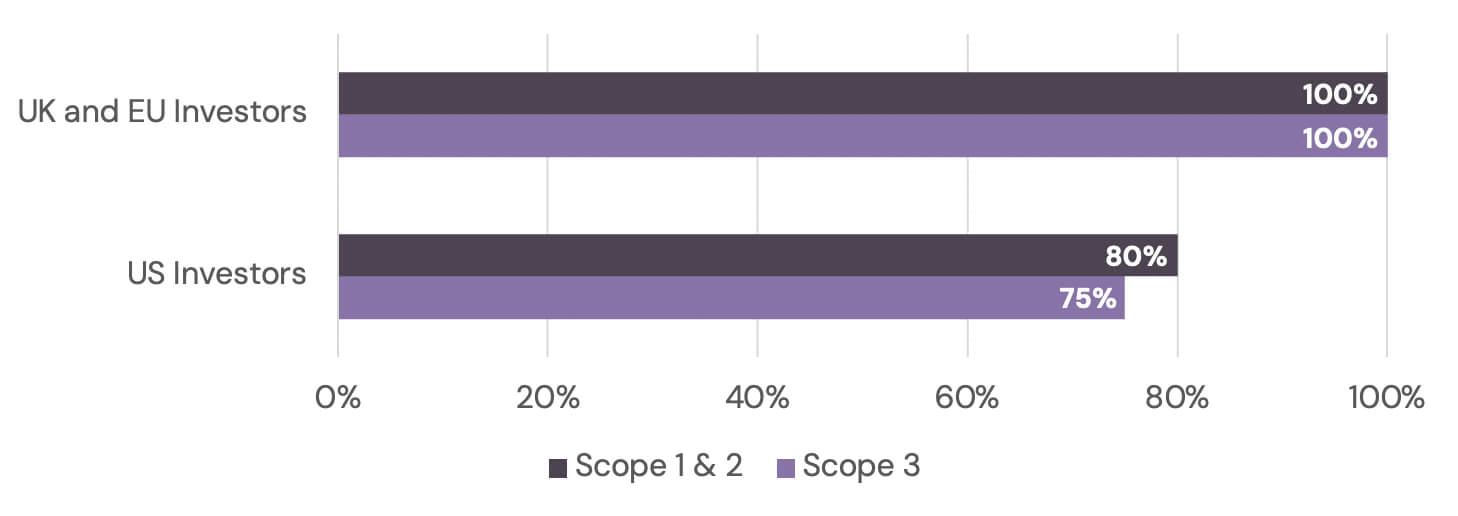
The year has not started well for high-profile, sustainable-finance initiatives. There have been prominent withdrawals from the Net Zero Asset Managers’ Initiative, Climate Action 100+, and related organizations. But the climate disclosures set into motion by the Task Force on Climate-related Financial Disclosures (TFCD) appear to be here to stay. Despite setbacks at a Federal level in the U.S. and scope limitations in Europe, many jurisdictions, including some U.S. states, have or are planning to mandate companies and investors to disclose their climate exposure.
It is a decade this year since the TCFD was formed and eight years since its recommendations were first published. The goal of those recommendations was to ensure that markets have information about the financial impacts of climate change, helping investors to consider climate risks and opportunities in their decisions.
Amos Wittenberg
As investors pull back on public commitments to climate action, many are refocusing on the central question posed by the TCFD: What aspects of climate change are material to investment activities? And following from that, how can work on climate topics add value to the portfolio?
This makes it timely to look closely at what investors are choosing to include in climate disclosures, and what their decisions reveal about underlying trends in sustainable finance. At the start of this year, my organization Unwritten benchmarked around 50 climate disclosure reports published in 2024 by funds investing in private equity and debt.
Collectively covering more than USD 6.5 trillion of assets across the U.K., EU, and U.S., those reports pointed to three clear trends:
- There is still no definite consensus on what metrics are worth collecting and disclosing.
- Translating climate impacts into dollars and cents is really difficult, even for the most financially literate and innovative organizations in the world.
- The information that makes it into disclosures is a small fraction of the climate work going on behind the scenes.
Trend #1: There Is Still No Definite Consensus on What Metrics Are Worth Collecting and Disclosing.
In late January, I facilitated a conversation between a group of sustainable finance professionals and a former U.K. Energy Minister on the evolving politics of climate risk. The session ended with an unresolved question about metrics in sustainable finance: What is actually worth measuring? What metrics translate the enormous breadth of climate impacts into decision-useful information for investors?
It’s a difficult question. The range of ways in which climate change can be financially material is enormously broad. Climate-related subsidence damaging British housing stock is a climate financial impact. So is the job market for ESG professionals. And so is the climate investing boom that fueled the growth of my own organization. The TCFD’s recommendations on the metrics to disclose aren’t entirely prescriptive, but they provide a framework and vocabulary — physical risk, transition risk, governance, strategy, and so on — that has given investors a relatively consistent starting point. From that starting point, however, our benchmark shows some quite different approaches playing out.
On the basics, there is a lot of consistency: Almost all investors follow the TCFD recommendation to disclose emissions for example — even the indirect scope 3 emissions that are comparatively hard to measure (see Figure 1).
Figure 1: Almost All Investors Include Scope 1, 2, and 3 Emissions Metrics

But when it comes to metrics measuring risk and opportunity, approaches are more varied. Many investors analyze physical and transition risks qualitatively, or say that such risks are considered in routine due diligence processes.
A strong majority of European and British investors (around two thirds), and a noteworthy minority of U.S. investors (around a third), follow the TCFD’s recommendation to use scenario analysis to assess their exposure to climate risks in quantitative terms. But it is not always clear from disclosure reports whether investors find the results of these scenario analysis exercises decision useful.
As I wrote for GARP last summer, there are many ways to conduct climate scenario analysis, and the outputs vary widely depending on the methodology and depth of the input data.
Where approaches diverge most starkly is in forward looking targets. Four out of five managers in the U.K. and EU report progress against emissions targets of some sort, but only 10% of U.S. investors do so. Specific frameworks for portfolio target setting and alignment, such as the Private Markets Decarbonization Roadmap (PMDR) or the Net Zero Investment Framework (NZIF 2.0), appear in around a third of all reports (see Figure 2).
Figure 2: Net-Zero Alignment Frameworks, Like the PMDR or NZIF 2.0, Are Mentioned in Around a Third of Disclosures

Of course, some of the regional differences in metrics reflect the different ways in which the TCFD’s recommendations have been applied by local regulators. But it is clear that the underlying question on metrics is unresolved. There is no agreed set of measurements to embed climate-specific financial impacts into investors’ everyday work of assessing and valuing risks and opportunities.
Trend #2. Translating Climate Impacts Into Dollars and Cents Is Very Difficult.
That leads to the second stand out trend: the difficulty of translating climate impacts into dollars and cents. In the disclosures we reviewed, nearly two thirds of British and European investors disclosed some form of climate scenario analysis exercise. But only a fraction disclosed financial impacts — around one in five for physical risks and one in 10 for transition risks (Figure 3).
Figure 3: Proportion of Investors Disclosing Scenario Analysis Results and Financial Impacts

There are lots of ways to interpret this discrepancy. It might be that financial impacts are not considered reliable enough for publication, or are too complicated to include in disclosure reports without a cumbersome amount of explanation. The impacts might be so large that they are awkward to disclose publicly, so small that they are not worth mentioning; or they might just not add anything that is not already captured by a qualitative risk rating.
So, when I say that translating climate impacts into dollars and cents is difficult, I do not mean technically difficult. There are plenty of tools and methodologies available. Instead, I mean that the whole topic is fraught. A lot of investors, in my experience, hope that dollar and cent climate impacts will be the perfect metric to connect climate work to the investment committee. They explore financial quantification as a way to translate climate impacts into decision-useful investment information with a single dollar number.
But it tends to become apparent quite quickly that the climate exposure of the portfolio is too diverse and uncertain to capture in a single number. Moreover, the climate models most often used to estimate financial impact work in a completely different way to standard financial models. Climate models tend to be scenario-based, meaning that they run backwards from an end state to consider its implications for the next 20 or 30 years. Financial models, on the other hand, generally project forward from the present day, exploring outcomes over a shorter period.
This doesn’t mean that financial impact estimates are not decision useful for investors. They can be very impactful. But they have to be considered alongside qualitative information about the real present-day risks and opportunities an asset faces, as well as how those risks might be mitigated. They should be used with the appropriate caveats, and as a jumping off point for conversation and deep analysis rather than as a single answer.
Trend #3: The Information That Makes It Into Disclosures Is a Small Fraction of the Climate Work Going on Behind the Scenes.
Almost every investor in our Benchmark reported that they assess climate risks and opportunities in due diligence, and that they manage climate risks as part of portfolio stewardship. All of them described their process and governance structure for doing so. As we compiled the benchmark, the extensive and thoughtful work behind each disclosure was clear to see. And having read many TCFD reports over several years, it is clear that the bar continues to rise in terms of rigor and depth across the industry.
Parting Thoughts
A decade ago, the TCFD began to leverage financial regulators to drive climate action. At the time framing climate change as a financial risk, and therefore something that regulators must act on, was a novel and bold thing to do.
Despite investors’ pull back from climate coalitions, I take the increasing quality and quantity of climate disclosures to be a positive trend. It reflects an increasing rigor in investors’ approach to climate risks and opportunities. The implied work behind the scenes is consistent with the TCFD’s intention to use reporting to help investors engage with climate topics in their routine decision making. At a moment when positive climate news is hard to come by, it is good to see the TCFD’s boldness paying off.
Amos Wittenberg is CEO of Unwritten, a climate risk platform covering physical, transition, and nature risk for private markets. Prior to founding Unwritten, Amos launched Palantir Technologies' climate data team and before that, covered financial crime and regulation as Editor in Chief of KYC360.
Topics: Green Finance & Sustainable Business, Climate Risk Management